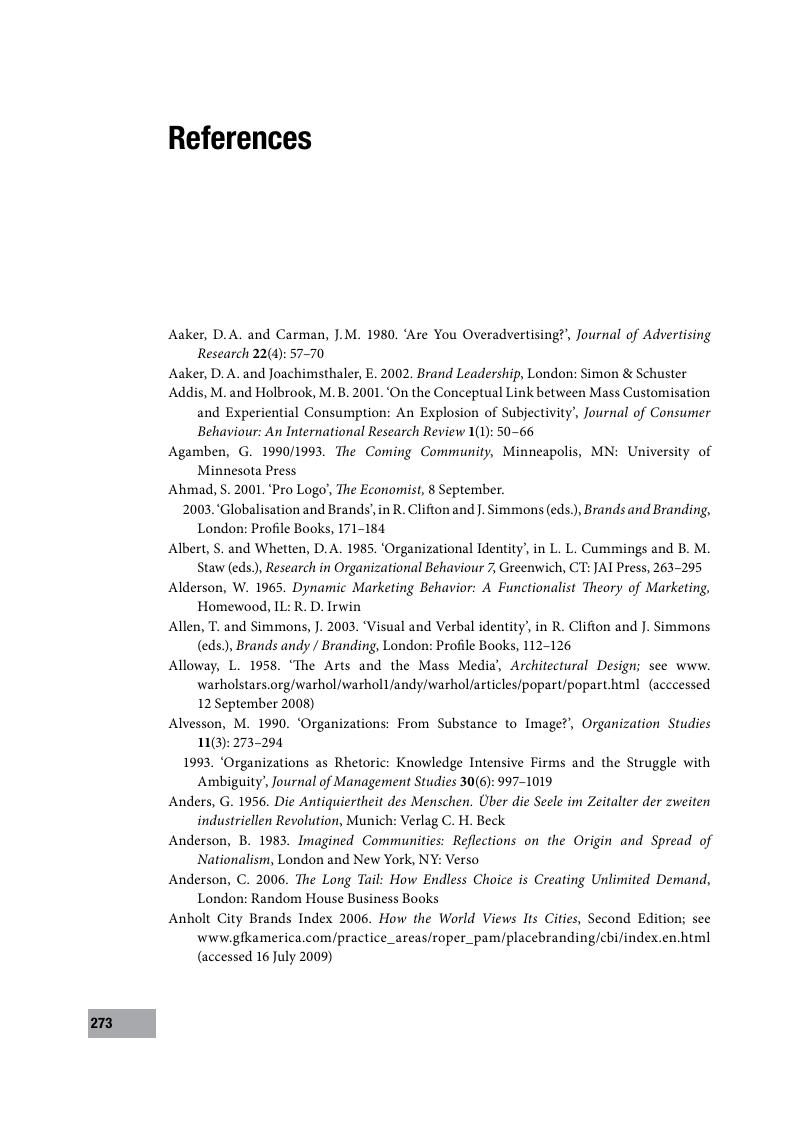References
Published online by Cambridge University Press: 10 January 2011
Summary

- Type
- Chapter
- Information
- Brand SocietyHow Brands Transform Management and Lifestyle, pp. 273 - 291Publisher: Cambridge University PressPrint publication year: 2010



